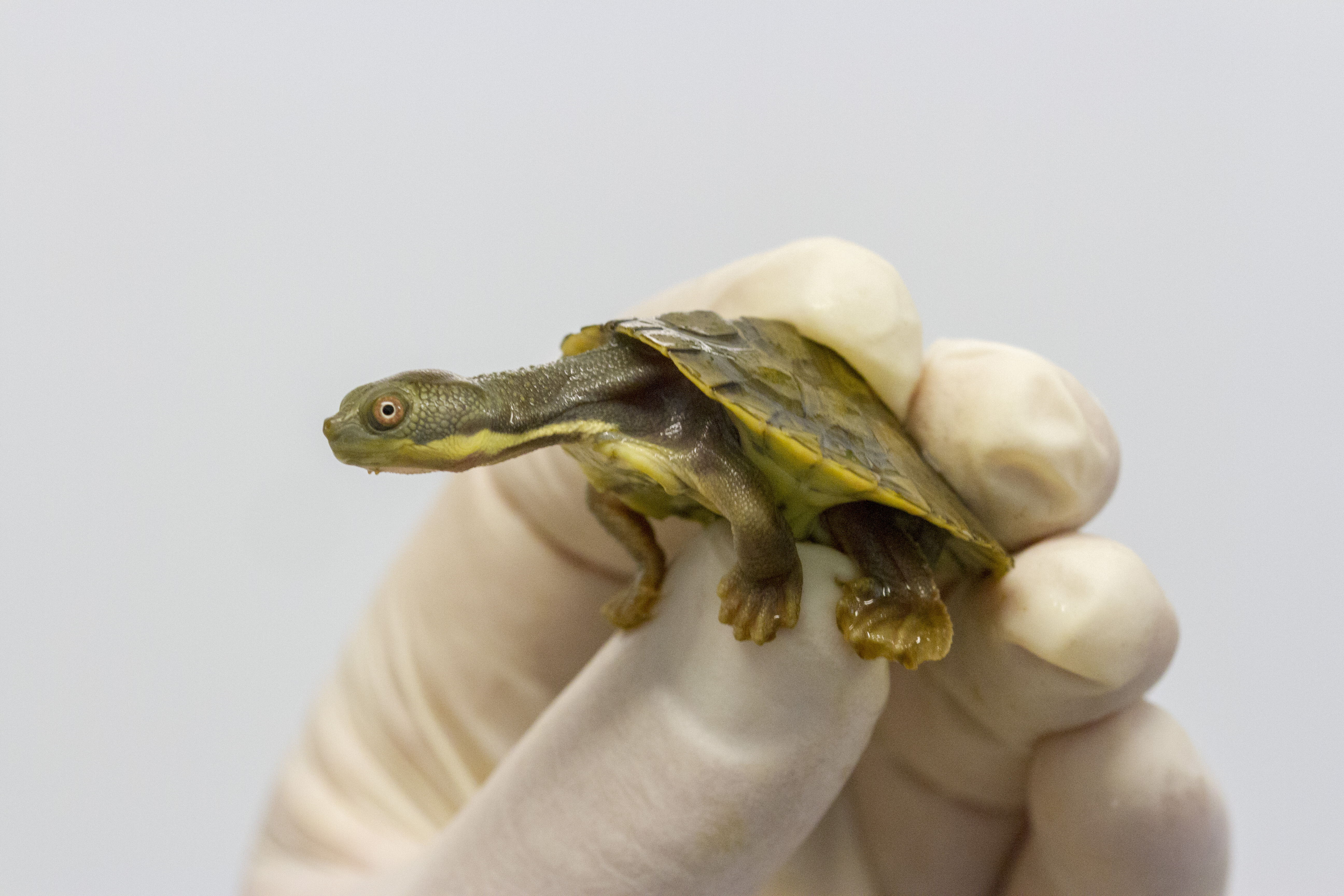
NSW DPI helps save endangered turtles
6 Nov 2018

Scientists from NSW Department of Primary Industries (DPI) have identified a virus which threatened to wipe out the only existing population of a critically endangered native species of freshwater turtle – the Bellinger River snapping turtle.
NSW DPI virologist, Peter Kirkland, said positive identification of the novel nidovirus could help protect these turtles.
“What we now call the Bellinger River virus was discovered following the deaths of more than 400 turtles in 2015,” Dr Kirkland said.
“It’s a great concern as the viability of the severely reduced wild turtle population is under an extreme threat.”
Working with the NSW Office of Environment and Heritage and the Taronga Conservation Society of Australia, who conducted a field survey, collected samples and confirmed an infectious agent was present, NSW DPI was able to identify the virus.
Staff at NSW DPI’s Elizabeth Macarthur Agricultural Institute employed complex scientific procedures to isolate the virus in cell culture from a range of turtle tissues.
DNA sequencing, known as nucleic acid sequencing, was then used to identify the complete genome of the virus.
Dr Kirkland said the DNA analysis showed the Bellinger River virus was different from all other recognised nidoviruses.
“The closest related nidoviruses were recently detected in the lungs of pythons and lizards, in contrast the turtles’ kidneys were most affected,” he said.
“Once we knew we were dealing with a novel virus, NSW DPI staff quickly developed a new test, polymerase chain reaction assay (PCR), to examine additional tissue and confirm the presence of the virus.
“Electron microscopy and other tests revealed high concentrations of virus in affected tissues which indicated the virus caused the turtle deaths.”
The PCR assay is helping monitor a quarantined colony of virus-free adult turtles and their offspring at Taronga Zoo as part of a reintroduction strategy and in regular river surveys to test other species of turtles, which may also be under threat from the Bellinger River virus.
A paper detailing identification of the virus was recently published and is available online, https://journals.plos.org/plosone/article?id=10.1371/journal.pone.0205209
Media contact: Bernadette York (02) 6938 1664 or 0427 773 785

